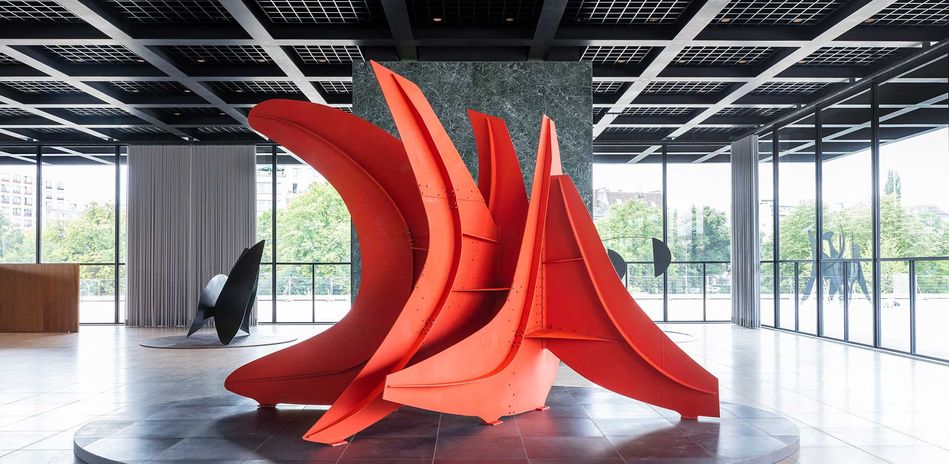 Alexander Calder, Five Swords, 1976, Sheet metal, bolts, paint, 541 x 671 x 884 cm / 213 x 264 x 348, Calder Foundation, New York © 2021 Calder Foundation, New York / Artists Rights Society (ARS), New York. VG-Bildkunst Bonn, 2021 / Photo: David von Becke
Alexander Calder, Five Swords, 1976, Sheet metal, bolts, paint, 541 x 671 x 884 cm / 213 x 264 x 348, Calder Foundation, New York © 2021 Calder Foundation, New York / Artists Rights Society (ARS), New York. VG-Bildkunst Bonn, 2021 / Photo: David von BeckeALEXANDER CALDER . Minimal / Maximal
Neue Nationalgaleri Berlin. ( 22.08.2021 to 13.02.2022 )
Alexander Calder (1898–1976) has been closely associated with the Neue Nationalgalerie for decades, thanks to his masterpiece Têtes et Queue (1965). The outdoor sculpture was installed for the inauguration of Mies van der Rohe’s iconic work of architecture and is now returning to the museum terrace for its reopening.
The American modernist’s transformative mobiles, stabiles and standing mobiles range from the miniature to the monumental. This exhibition traces the unique relationship between size, scale and spatiality in Calder’s works, while juxtaposing his organic forms with the strict geometry of Mies van der Rohe’s building in a poetic dialogue.
The open, experimental approach of the installation – which was specifically conceived for the Neue Nationalgalerie’s glass hall – relies on the participation of visitors, who will be able to experience some of Calder’s works in motion. Some of Calder’s works are activated at varying times, up to four times daily.
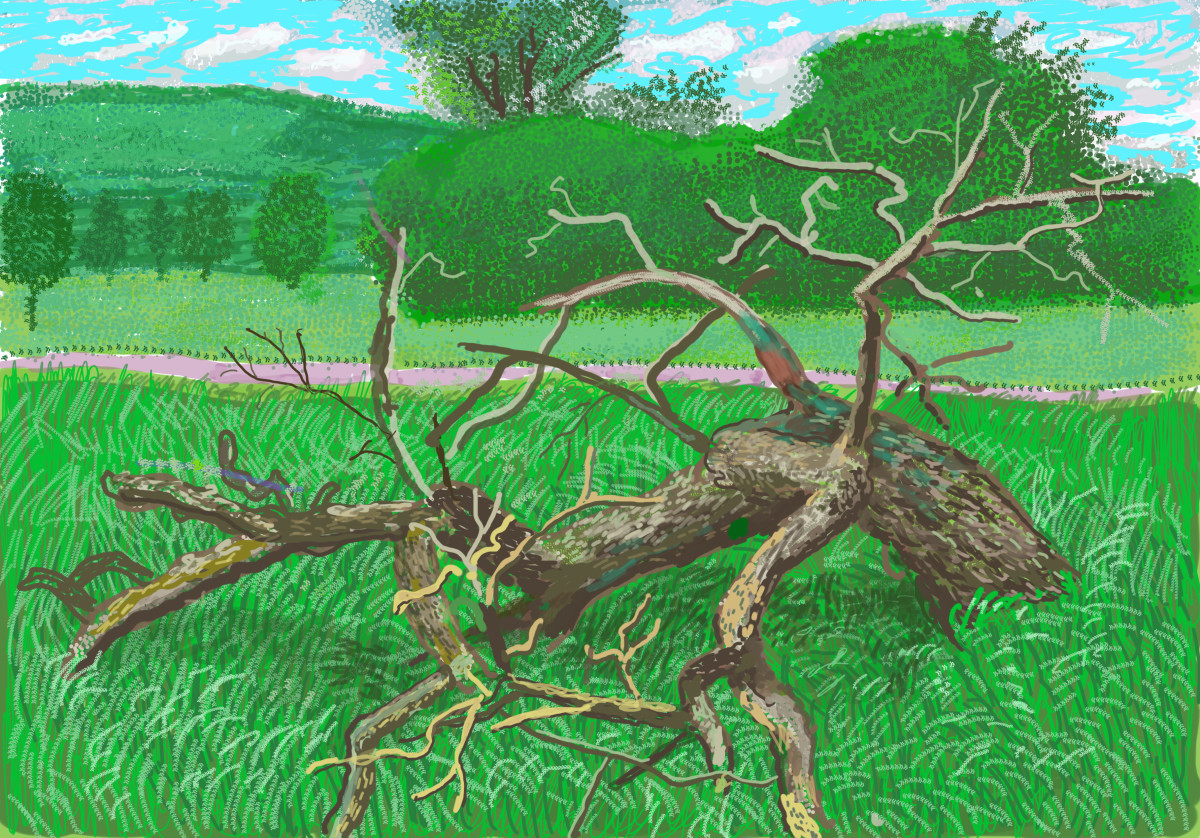 David Hockney, No. 323, 13th May 2020. iPad painting. © David Hockney.
David Hockney, No. 323, 13th May 2020. iPad painting. © David Hockney.DAVID HOCKNEY: The Arrival of Spring, Normandy, 2020
Royal Academy of Arts ( London ) ( May, 23 — September, 26 2021 )
David Hockney is one of the most important British artists of the 20th century – and he remains one of the most inventive.
Throughout his career, he’s investigated new technologies and explored different ways to make art, beginning with his iPhone in 2007 before adopting the iPad and Stylus in 2010.
This new body of work – 116 works in total – has been ‘painted’ on the iPad and then printed onto paper, with Hockney overseeing all aspects of production.
As Hockney himself notes, working on the iPad requires the ability to draw and paint. Each work – which has been printed far larger than the screen on which it was created – allows you to see every mark and stroke of the artist’s hand.
Made in the spring of 2020, during a period of intense activity at his home in Normandy, this exhibition charts the unfolding of spring, from beginning to end, and is a joyous celebration of the seasons.
Opening exactly a year after the works were made during the global pandemic, this exhibition will be a reminder of the constant renewal and wonder of the natural world – and the beauty of spring.
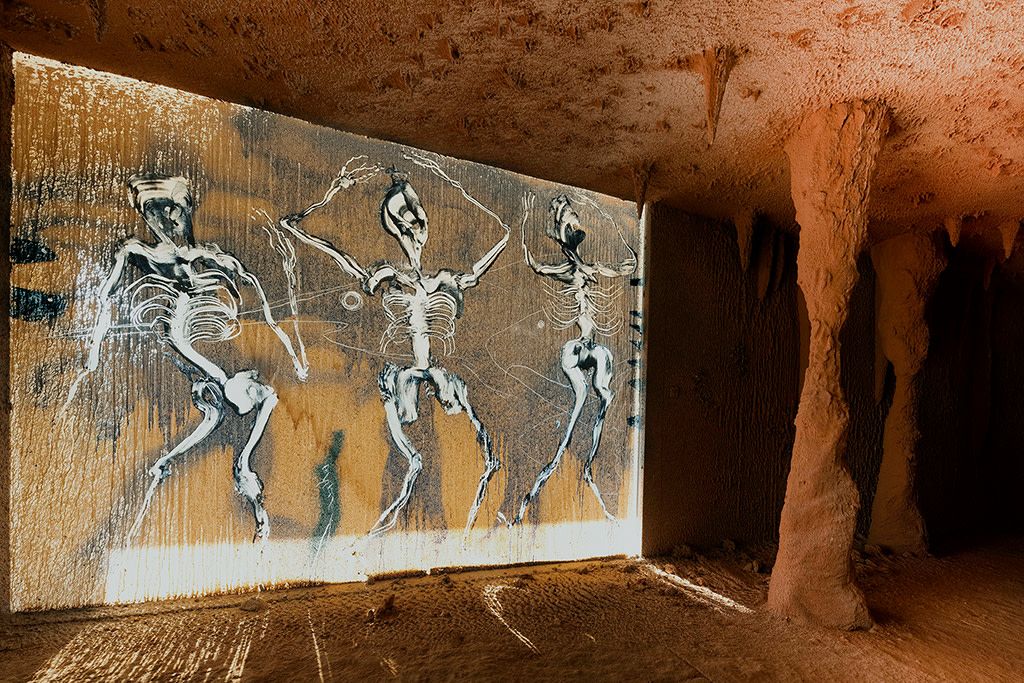 @ Miquel Barceló - @ photo Phllippe Chancel
@ Miquel Barceló - @ photo Phllippe ChancelMIQUEL BARCELÓ - Ressac
Villa Carmignac, Porquerolles ( May 20 - October 17. 2021 )
From one island to another—from Mallorca to Porquerolles—and a Catalan studio to the Villa Carmignac, Miquel Barceló inscribes his work within a Mediterranean progression. In dialogue with The Imaginary Sea, he was given carte blanche to entirely transform the Villa’s vaulted gallery.
The deeply insular artist draws from the sea, the sand, the seascape: sources that inspire him. Ressac is a painting that one enters, made up of successive layers of plaster and clay that embrace every volume and surface of the space: walls, floors and glass partitions. Like painting projected onto architecture, it evokes the movement of an intense wave doubling backing on itself. This devastated landscape is, for Miquel Barceló, akin to the painter’s studio, transformed into a strange cave, dry after the wave recedes and the water evaporates.
Submerged by this tidal wave like a marine life Pompeii, objects, people and animals (octopuses, swordfish, bison)—be they protectors or predators—are trapped in the clay. This attack of the sea conveys a new shape, revealing traces of an ancient society on the walls like cave art, seemingly connecting this marine-inflected work to its origins.
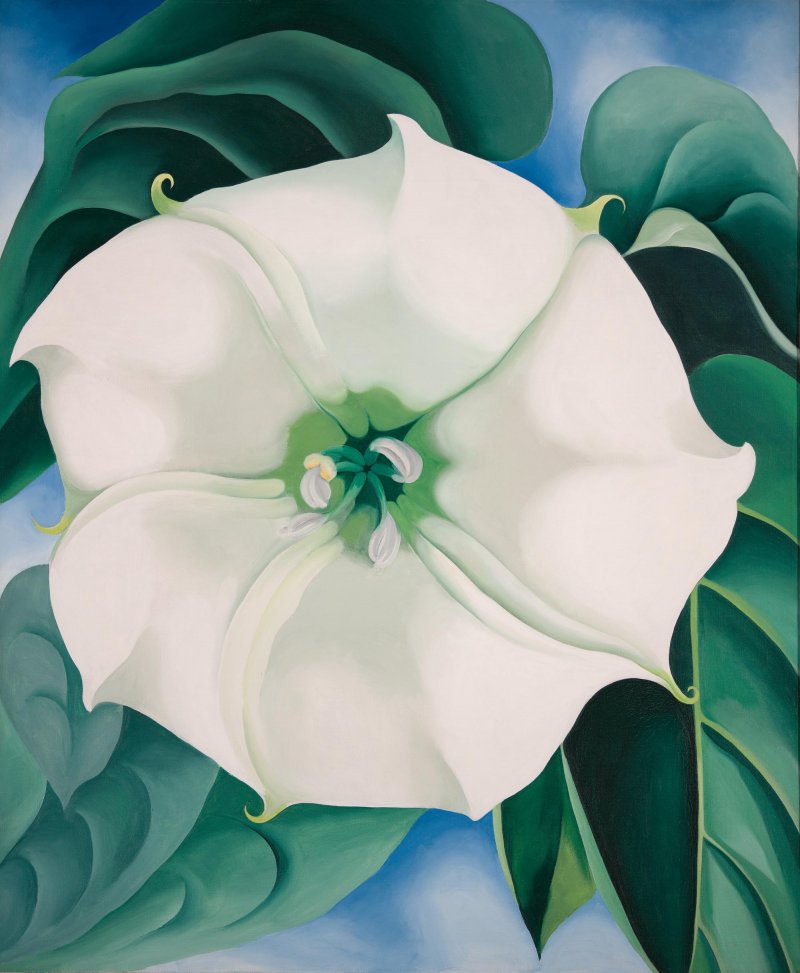 Georgia O'Keeffe Estramonio. Flor blanca n.º 1 1932 Oil on canvas 121,9 × 101,6 cm Crystal Bridges Museum of American Art, Bentonville, Arkansas, 2014.35 © Georgia O’Keeffe Museum, VEGAP, Madrid, 2021 Photography by Edward C. Robison III
Georgia O'Keeffe Estramonio. Flor blanca n.º 1 1932 Oil on canvas 121,9 × 101,6 cm Crystal Bridges Museum of American Art, Bentonville, Arkansas, 2014.35 © Georgia O’Keeffe Museum, VEGAP, Madrid, 2021 Photography by Edward C. Robison IIIGEORGIA O´KEEFFE
Museo Nacional Thyssen-Bornemisza (Madrid) ( April 20 - August 8, 2021 )
The museum presents the first retrospective in Spain of Georgia O'Keeffe (1887-1986). Through a selection of approximately 90 works, the visitor can immerse themselves in the pictorial universe of this artist, considered one of the greatest representatives of North American art of the 20th century.
The exhibition is a complete journey through O'Keeffe's artistic career, from the works of the 1910s with which she became a pioneer of abstraction, through her famous flowers or her views of New York - thanks to the that she was exalted as one of the main figures of the modernity of her country-, even the paintings of New Mexico, the result of her fascination with the landscape and the mixture of cultures of this remote territory.
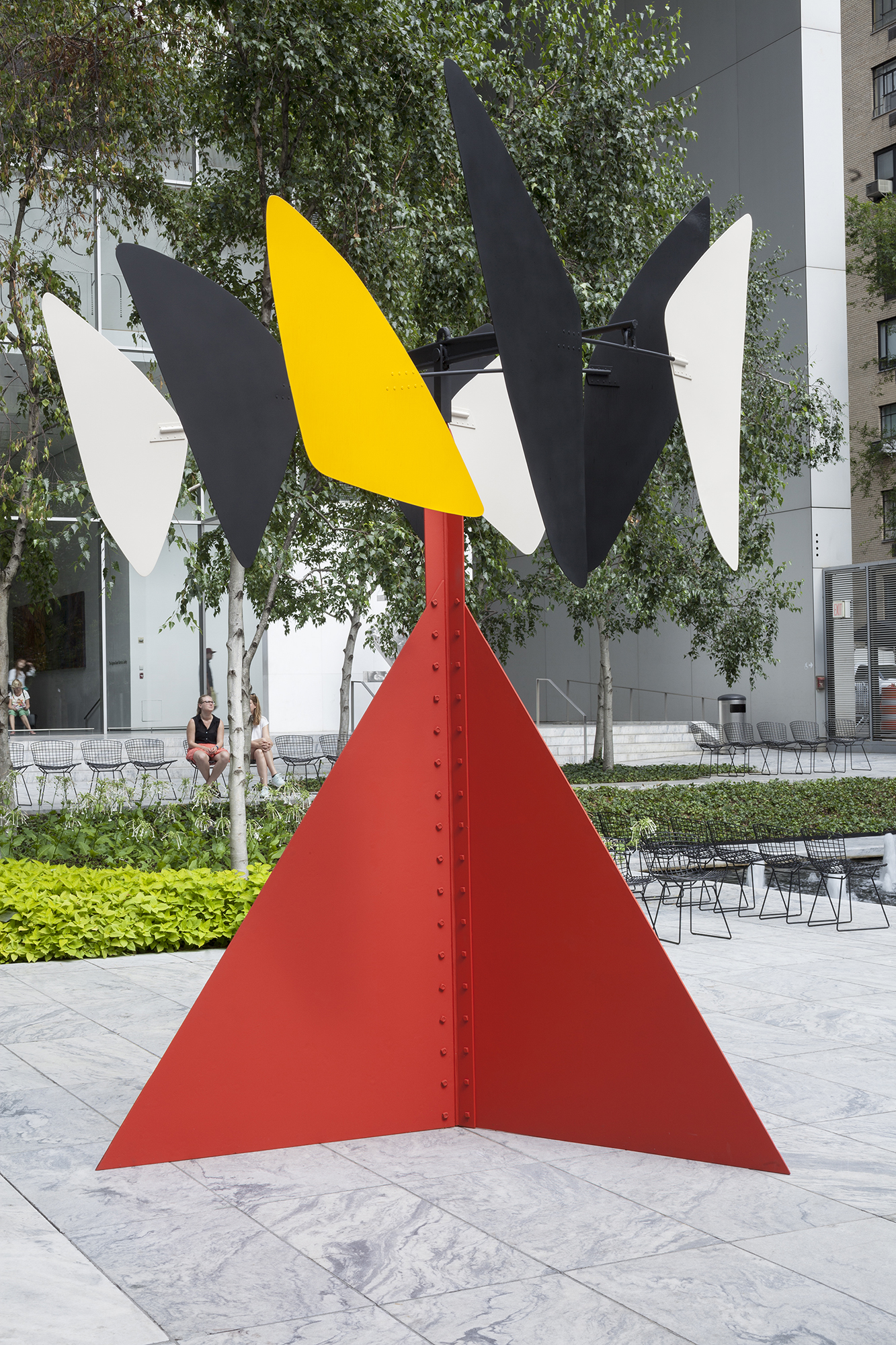 Alexander Calder. Sandy’s Butterfly. 1964. Painted stainless sheet steel and iron rods, 12′ 8″ x 9′ 2″ x 8′ 7″ (386 x 279 x 261 cm). The Museum of Modern Art, New York. Gift of the artist. © 2021 Calder Foundation, New York / Artists Rights Society (ARS),
Alexander Calder. Sandy’s Butterfly. 1964. Painted stainless sheet steel and iron rods, 12′ 8″ x 9′ 2″ x 8′ 7″ (386 x 279 x 261 cm). The Museum of Modern Art, New York. Gift of the artist. © 2021 Calder Foundation, New York / Artists Rights Society (ARS),ALEXANDER CALDER : Modern from the Start
The Museum of Modern Art ( New York ) ( March 14, – August 07, 2021 )
Alexander Calder reimagined sculpture as an experiment in space and motion, upending centuries-old notions that sculpture should be static, grounded, and dense by making artworks that often move freely and interact with their surroundings. “One of Calder’s objects is like the sea,” wrote the philosopher Jean-Paul Sartre, “always beginning over again, always new.” Bringing together early wire and wood figures, works on paper, jewelry, mobiles in motion, and monumental abstract sculptures, the exhibition takes a deep dive into the full breadth of Calder’s career and inventiveness.
Calder’s ever-changing artworks invite a viewer’s sustained attention; and The Museum of Modern Art has provided a setting for this productive exchange ever since his work was first exhibited here in 1930, just months after the Museum opened its doors. This exhibition looks at Calder’s work through the lens of this connection. Throughout MoMA’s formative years, Calder, in his unofficial role as “house artist,” was called upon to produce several commissioned works—including Lobster Trap and Fish Tail, a multicolored mobile that hangs in the same stairwell for which it was made in 1939. His works have been a mainstay of the Museum’s galleries and Sculpture Garden ever since.
Drawn from MoMA’s collection and augmented with key loans from the Calder Foundation, the exhibition celebrates one of the most beloved artists of the 20th century and presents rarely seen works, including the large-scale Man-Eater with Pennants, which will be on view in the Sculpture Garden for the first time in more than 50 years after new conservation.
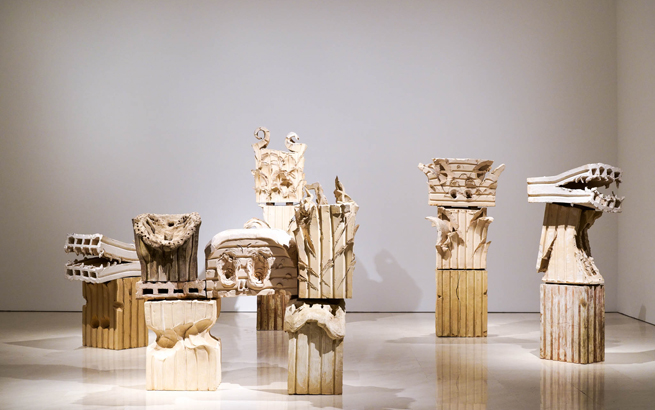 Miquel Barceló's Totems in the Museo Picasso Málaga exhibition. © Miquel Barceló, VEGAP, Málaga, 2021
Miquel Barceló's Totems in the Museo Picasso Málaga exhibition. © Miquel Barceló, VEGAP, Málaga, 2021MIQUEL BARCELÓ . Metamorphosis
Museo Picasso Málaga ( January 27 - September 26 . 2021 )
The Museo Picasso Málaga presents the exhibition Miquel Barceló. Metamorphosis, which takes its name from the famous story by Franz Kafka published in 1915, with about a hundred works made between 2014 and 2020 that can be seen from January 27, 2021. After more than a decade of absence in Malaga, the artist meets in an exclusive selection of works made in recent years: thirty ceramics, thirteen paintings, forty-two watercolors, six travel notebooks and a small sculpture; as well as an installation made up of seven large bronzes that has been installed in the central courtyard of the museum.
Mutation, mobility and transition are some of the characteristics of the Mallorcan artist's work, whose creative world has undergone a permanent metamorphosis from the beginning of his career. The passage of time and the alchemy of the materials stand out as elements of the common thread of this exhibition that has the collaboration of the “la Caixa” Foundation.
The exhibition Miquel Barceló. Metamorphosis, curated by Enrique Juncosa, pays attention to the transhumant cultural condition of the artist, at the same time that it supposes a critical approach to creation understood as a project of unlimited progress: each of his works leads us to another, in a process of cyclical reinvention. Starting from the reality that he sees, lives, reads and imagines, the representations include sociological or ecological nuances, at the same time that they express a passionate inner life. His work has been exhibited in prestigious institutions around the world such as the Prado Museum, Madrid; the Musée du Louvre, Paris; or the Galleria Nazionale d’Arte Moderna, Rome, among others.
As for Pablo Picasso, also for Barceló ceramics, painting or drawing are variations, experiments of a whole: “Each work is experimental, each work is an essay for another, which will probably never exist, and I think that it is as valid for my painting as it is for my ceramics or for anything that comes out of my hand ”. He affirms the Mallorcan that what he has received from Picasso is "a kind of generic influence, a way of relating to life, a way of being in the world." The constant resumption of the search, the versatility in the exploration of new media, the interrelation between various artistic techniques and periods, an incessant and dizzying way of working, the chromatic richness, the discourse with the great tradition, the fascination for mythology and The archaic symbolism of bullfighting or the illustrations in books, somehow unite these two Spanish artists, as cosmopolitan as children of the Mediterranean, creators of an art as primitive as it is irresistibly modern.
 Vasily Kandinsky Líneas negras (Schwarze Linien), diciembre de 1913 Óleo sobre lienzo, 130,5 × 131,1 cm Solomon R. Guggenheim Museum, Nueva York, Colección Fundacional Solomon R. Guggenheim, por donación 37.241 © Vasily Kandinsky, VEGAP, Bilbao 2020
Vasily Kandinsky Líneas negras (Schwarze Linien), diciembre de 1913 Óleo sobre lienzo, 130,5 × 131,1 cm Solomon R. Guggenheim Museum, Nueva York, Colección Fundacional Solomon R. Guggenheim, por donación 37.241 © Vasily Kandinsky, VEGAP, Bilbao 2020KANDINSKY
Museo Guggenheim Bilbao ( November, 20- 2020 - May, 23- 2021 )
As a pioneer of abstraction and a renowned aesthetic theorist, Vasily Kandinsky (b. 1866, Moscow; d. 1944, Neuilly-sur-Seine, France) is among the foremost artistic innovators of the early twentieth century. In his endeavor to free painting from its ties to the natural world, Kandinsky discovered a new subject matter based solely on the artist’s “inner necessity” that would remain his lifelong concern.
In Munich in the 1900s and early 1910s, Kandinsky began exploring the expressive possibilities of color and composition, but he was abruptly forced to leave Germany with the outbreak of World War I, in 1914. The artist eventually returned to his native Moscow, and there his pictorial vocabulary started to reflect the utopian experiments of the Russian avant-garde, who emphasized geometric shapes in an effort to establish a universal aesthetic language. Kandinsky subsequently joined the faculty of the Bauhaus, a German school of art and applied design that shared his belief in art’s ability to transform self and society. Compelled to abandon Germany again when the Bauhaus closed under Nazi pressure in 1933, he settled outside Paris, where Surrealism and the natural sciences influenced Kandinsky’s biomorphic imagery.
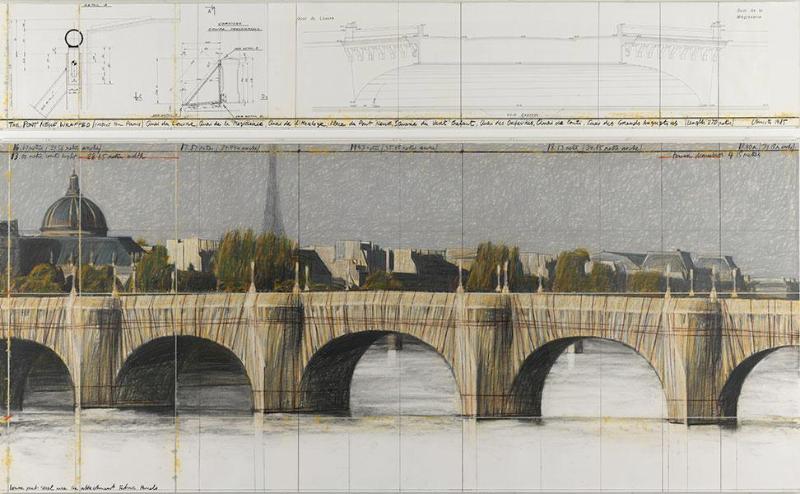 The Pont-Neuf Wrapped (Project for Paris) ©Christo et Jeanne-Claude
The Pont-Neuf Wrapped (Project for Paris) ©Christo et Jeanne-ClaudeCHRISTO AND JEANNE-CLAUDE - Paris !
Centre Pompidou - Paris ( July 1 - October 19, 2020 )
As of 1975, Christo and Jeanne-Claude developed the idea of wrapping the Pont-Neuf in Paris in a golden sandstone-coloured polyamide canvas, which would cover the sides and the vaults of the bridge's twelve arches, the parapets, the edges and the footpaths (the public could walk on the canvas), its 44 lamps and the vertical walls of the central island of the western end of Île de la Cité and the Esplanade du Vert-Galant.
The major exhibition devoted to Christo and Jeanne Claude retraces the story of this project, from 1975 to 1985, and looks back at their Parisian period, between 1958 and 1964, before the wrapping of the Arc de Triomphe in 2021.
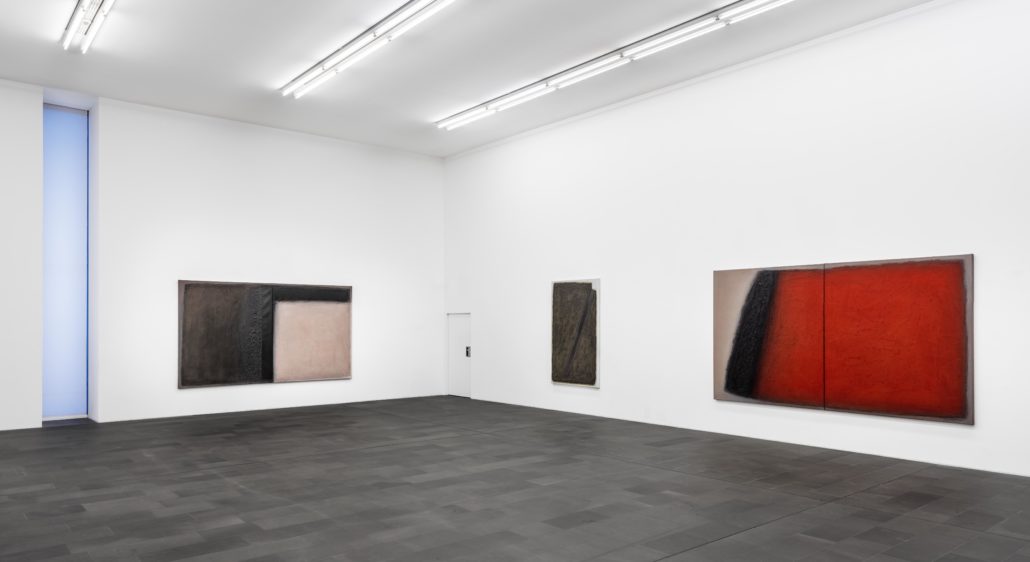 View of the exhibition @ Photo H Krause
View of the exhibition @ Photo H KrauseBECHTOLD
MKM Museum Küppersmühle of Modern Art, Duisburg ( March, 11 - May, 24, 2020 )
Analogous to an architect, I construct my pictures. Man lies at the heart of my work – and he lives, just like Nature, in contrasts, tensions and disruption. We are existentially embedded within the natural interplay of ordered disorder and disordered order. My pictures constitute an attempt to translate this complex unfathomability into artistic reality. [Erwin Bechtold]
In Ewin Bechtold’s own words, contrasts have been a constant source of fascination for him, and inform every successful image. This manifests itself in the stringent reduction of his palette to black and white, and extends to the deconstruction of geometrical forms. Thus, flowing into his works are the stark contrast between the dazzling southern Mediterranean light and dark shadow, and the inherent tension between geometry and artisanship in the island of Ibiza’s cubic architecture. Work titles such as Discordia describe the system in which Bechtold operates: Order is only there to be disrupted.
The outcome is an oeuvre which commands an enduring fascination by virtue of its artistic rigour, its spatial presence and the vying tension between emotionality and rationality.
A participant of the 1968 documenta, his paintings and graphic works are represented in many important collections and museums around the world, including Fundació Juan Miro (Barcelona), Museo Nacional Reina Sofía (Madrid), the Federal Collection of Contemporary Art, (Bonn), Ludwig Museum (Cologne), Von der Heydt-Museum (Wuppertal), Tate Gallery (London), Carnegie Museum of Art (Pittsburgh/USA) or The Graphic Art Collection of the ALBERTINA Museum (Vienna). A number of his works are also contained in the Ströher Collection (Duisburg/Darmstadt).
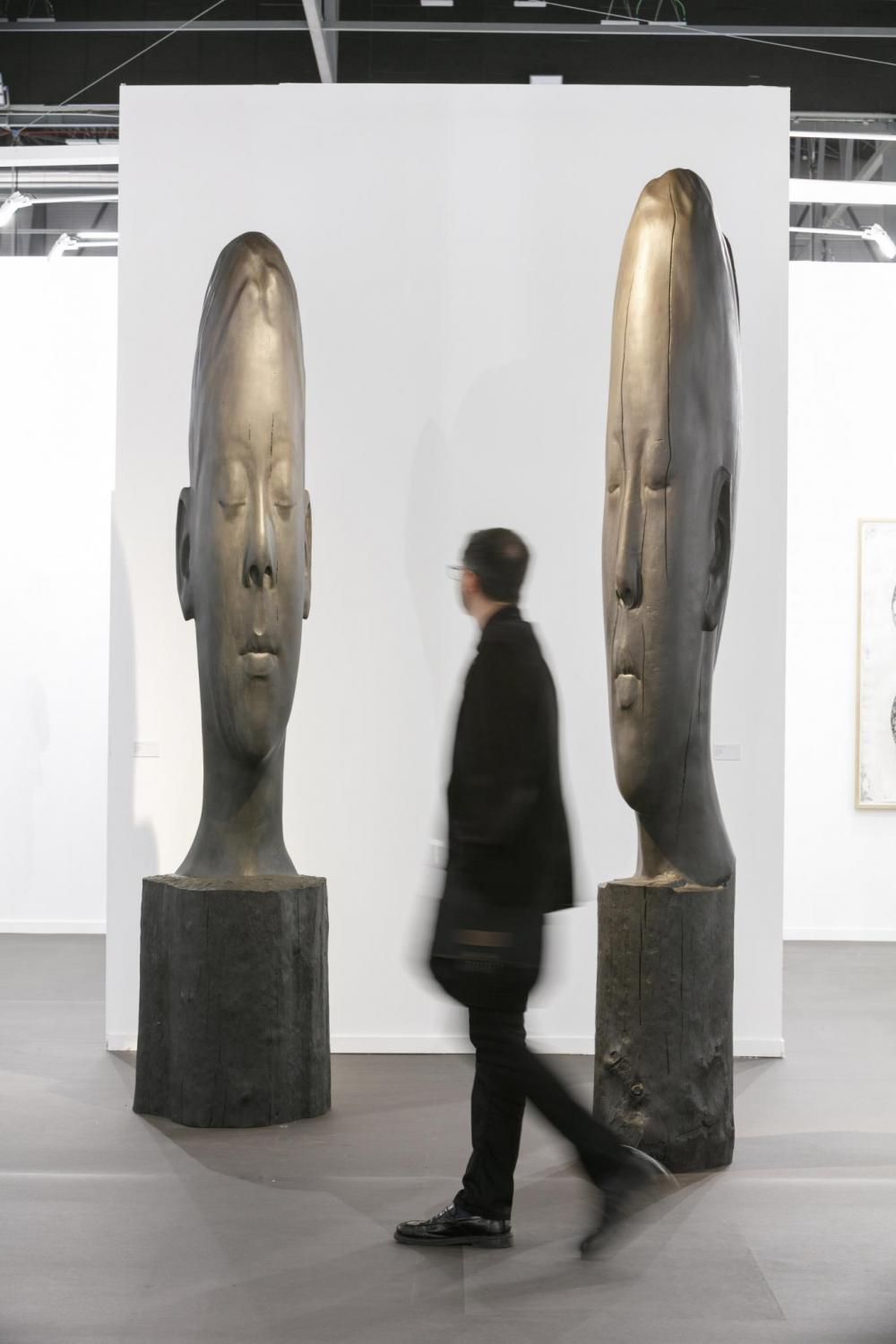 Exhibition view @ARCOmadrid 2020
Exhibition view @ARCOmadrid 2020ARCOmadrid 2020
Ifema Feria de Madrid ( February 26 - March 01, 2020 )
ARCOmadrid is the International Contemporary Art Fair of Madrid. One of the main contemporary art fairs of the international circuit that is held annually in February in the Spanish capital.
ARCOmadrid 2020 again presents a careful selection of national and international galleries, both in the General Program and in the Dialogues sections, curated by Agustín Pérez-Rubio and Lucia Sanromán; Opening, curated by Tiago de Abreu Pinto and Övül ö. Durmusoglu and It’s Just a Matter of Time curated by Alejandro Cesarco, Mason Leaver-Yap and Manuel Segade in the discursive program.
Along with the contents of the galleries, ARCOmadrid presents other spaces that broaden the vision of visitors around contemporary art.
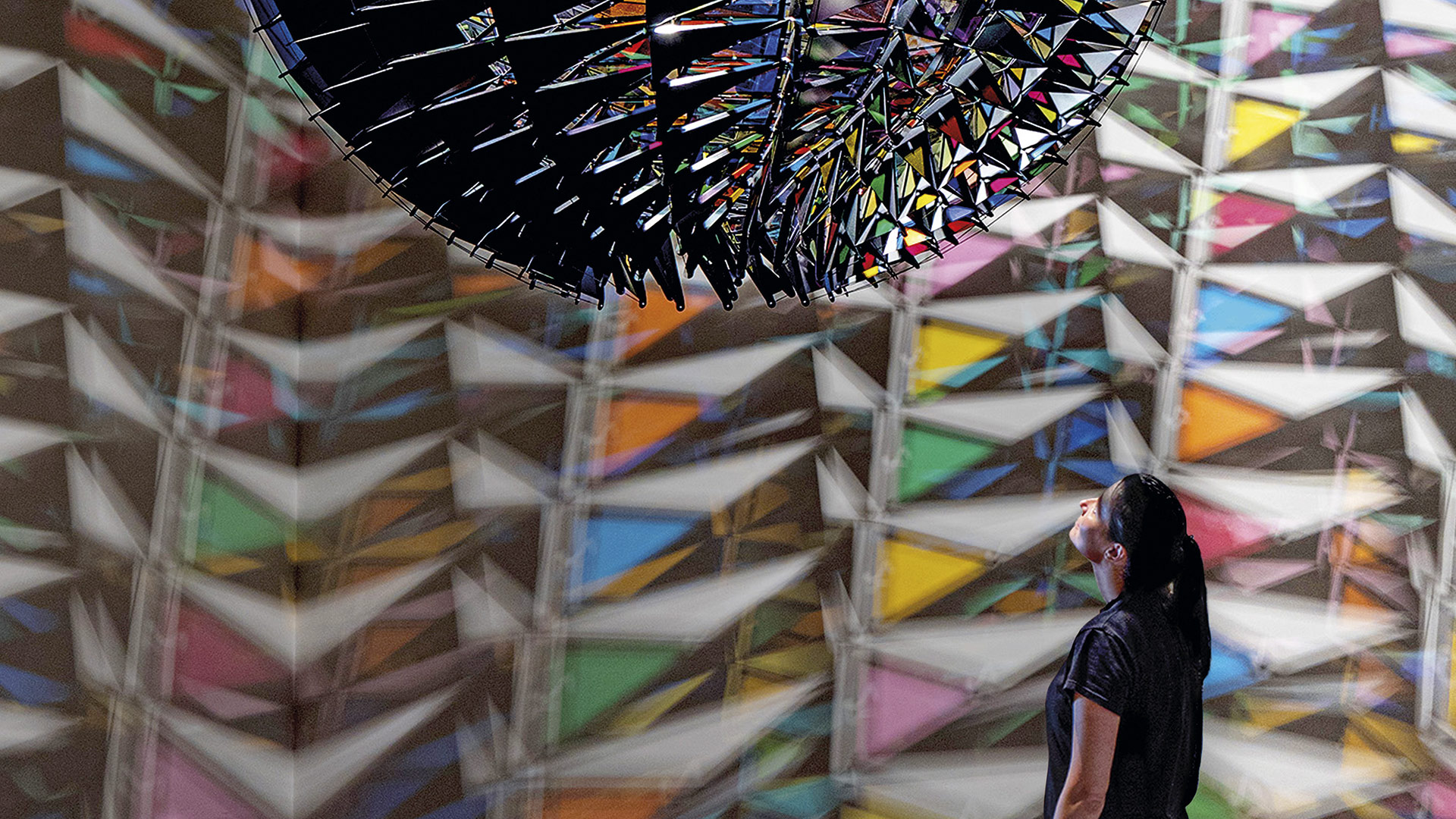 Exhibition View © FMGB Guggenheim Bilbao Museoa, 2020
Exhibition View © FMGB Guggenheim Bilbao Museoa, 2020OLAFUR ELIASSON - In Real Life
Museo Guggenheim Bilbao ( February 14 - June 21, 2020 )
Danish-Icelandic artist Olafur Eliasson (b. 1967) puts the experience of viewers at the center of his art. Olafur Eliasson: In real life brings to our attention some of today’s most urgent issues through around 30 artworks created by the artista between 1990 and today: sculptures, photographs, paintings, and installations that play with reflections and shifting colors and challenge the way we navigate and perceive our environment. Through materials such as moss, water, glacial ice, fog, light, or reflective metals, Eliasson encourages viewers to reflect upon their understanding and perception of the physical world that surrounds them.
Eliasson’s art grows from an interest in perception, movement, embodied experience, and feelings of self. Central to his artistic practice are his concern with nature, inspired by time spent in Iceland; his research into geometry; and his ongoing investigations into how we perceive, feel about, and shape the world around us. Studio Olafur Eliasson, his Berlin-based studio, is a space for work, but also for encounters and dialogues, that brings together a diverse team of skilled craftsmen, architects, archivists, researchers, administrators, cooks, programmers, art historians, and specialized technicians.
His practice extends beyond making artworks, exhibitions, and public interventions to include architectural projects. Convinced that art can have a strong impact on the world outside the museum, Eliasson has created solar lamps for off-grid communities, conceived artistic workshops for asylum seekers and refugees, created art installations to raise awareness of the climate emergency, and in September 2019, he was named Goodwill Ambassador for the UNDP. “Art,” Eliasson says, “is not the object but what the object does to the world.”
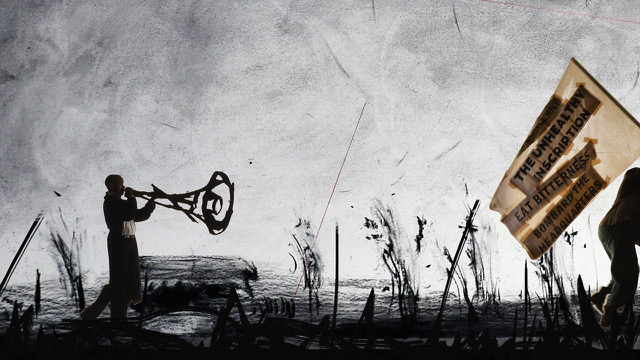 More Sweetly Play the Dance ©William Kentridge
More Sweetly Play the Dance ©William KentridgeWILLIAM KENTRIDGE - More Sweetly Play the Dance
Arsenale Amalfi (Italy) (09.02.2020 – 12.02.2020)
A show by a major figure in the contemporary art scene marks the re-opening and restoration of the atmospheric exhibition spaces of the Arsenale in Amalfi, the venue
for the ground-breaking exhibition Arte Povera più Azioni Povere held in the late 1960s.
With its avant-garde works, the event brought Italian art into the international arena with a movement that still remains a touchstone for research and creativity.
More Sweetly Play the Dance by William Kentridge is the event chosen to celebrate the memory of these places.
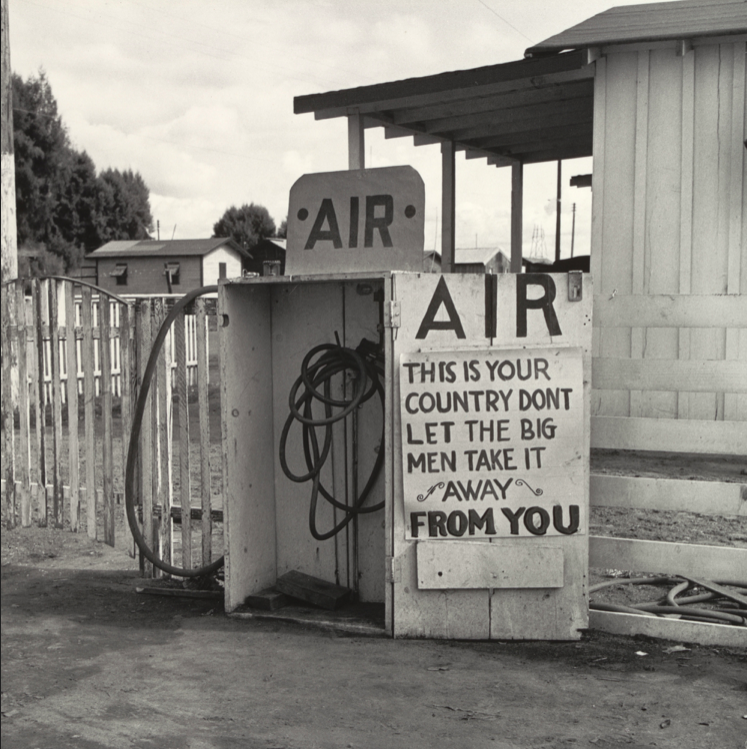 Dorothea Lange. Kern County, California, November 1938. Gelatin silver print, printed 1965. 12 7/16 x 12 1/2" (31.6 x 31.7 cm).
Dorothea Lange. Kern County, California, November 1938. Gelatin silver print, printed 1965. 12 7/16 x 12 1/2" (31.6 x 31.7 cm).DOROTHEA LANGE - Words & Pictures
Museum of Modern Art - New York ( February 9 – May 9, 2020 )
Toward the end of her life, Dorothea Lange (1895–1965) reflected, “All photographs—not only those that are so called 'documentary’...can be fortified by words.” A committed social observer, Lange paid sharp attention to the human condition, conveying stories of everyday life through her photographs and the voices they drew in. Dorothea Lange: Words & Pictures, the first major MoMA exhibition of Lange’s in 50 years, brings iconic works from the collection together with less seen photographs—from early street photography to projects on criminal justice reform. The work’s complex relationships to words show Lange’s interest in art’s power to deliver public awareness and to connect to intimate narratives in the world.
In her landmark 1939 photobook An American Exodus—a central focus of the show—Lange experiments with combining words and pictures to convey the human impact of Dust Bowl migration. Conceived in collaboration with her husband, agricultural economist Paul Taylor, the book weaves together field notes, folk song lyrics, newspaper excerpts, and observations from contemporary sociologists. These are accompanied by a chorus of first-person quotations from the sharecroppers, displaced families, and migrant workers at the center of her pictures. Presenting Lange’s work in its diverse contexts—photobooks, Depression-era government reports, newspapers, magazines, poems—along with the voices of contemporary artists, writers, and thinkers, the exhibition offers a more nuanced understanding of Lange’s vocation, and new means for considering words and pictures today.
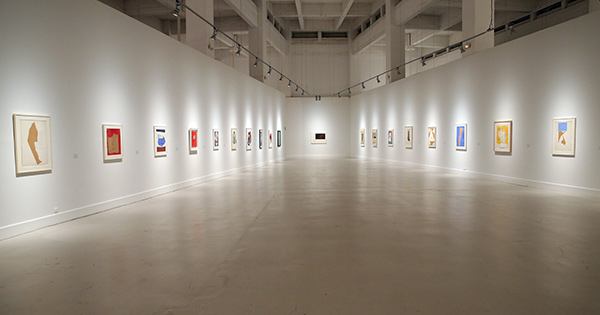 Exhibition view
Exhibition viewROBERT MOTHERWELL - Collages
Centro de Arte Contemporáneo de Málaga ( February 7 - May 17, 2020 )
The CAC Málaga is proud to present the work of Robert Mother- well (Aberdeen, Washington, 1915 – Provincetown, Massachu- setts, 1991) in Collages, the first exhibition in Spain devoted entirely to this creative technique. The show consists in almost thirty works, several of which are over one metre wide.
Motherwell was an American painter, printmaker and editor. Ini- tially influenced by Surrealist Automatism, he went on to become a prominent exponent and theorist of Abstract Expressionism. He was a member of the New York School, which included renowned artists like Jackson Pollock, Mark Rothko and Willem de Kooning. This school began a movement in which painting triumphed as a map of visual experimentation based on working with the medium itself: colour and the two dimensions of the picture plane.
The works selected for this exhibition were produced during the most mature period of his career, in the 1960s, 70s and 80s. Motherwell approached these idiosyncratic creations with opti- mism and conviction; as spaces conducive to ellipses and sudden twists, they give rise to unexpected consequences and allow for possibilities opposed to the gesturality of the brush. They require viewers to have a contemplative attitude and an open mind, to see beyond the surface and observe from a distance, without fixating on their immediate meaning or usefulness, and above all to appre- ciate their capacity for transcendence.
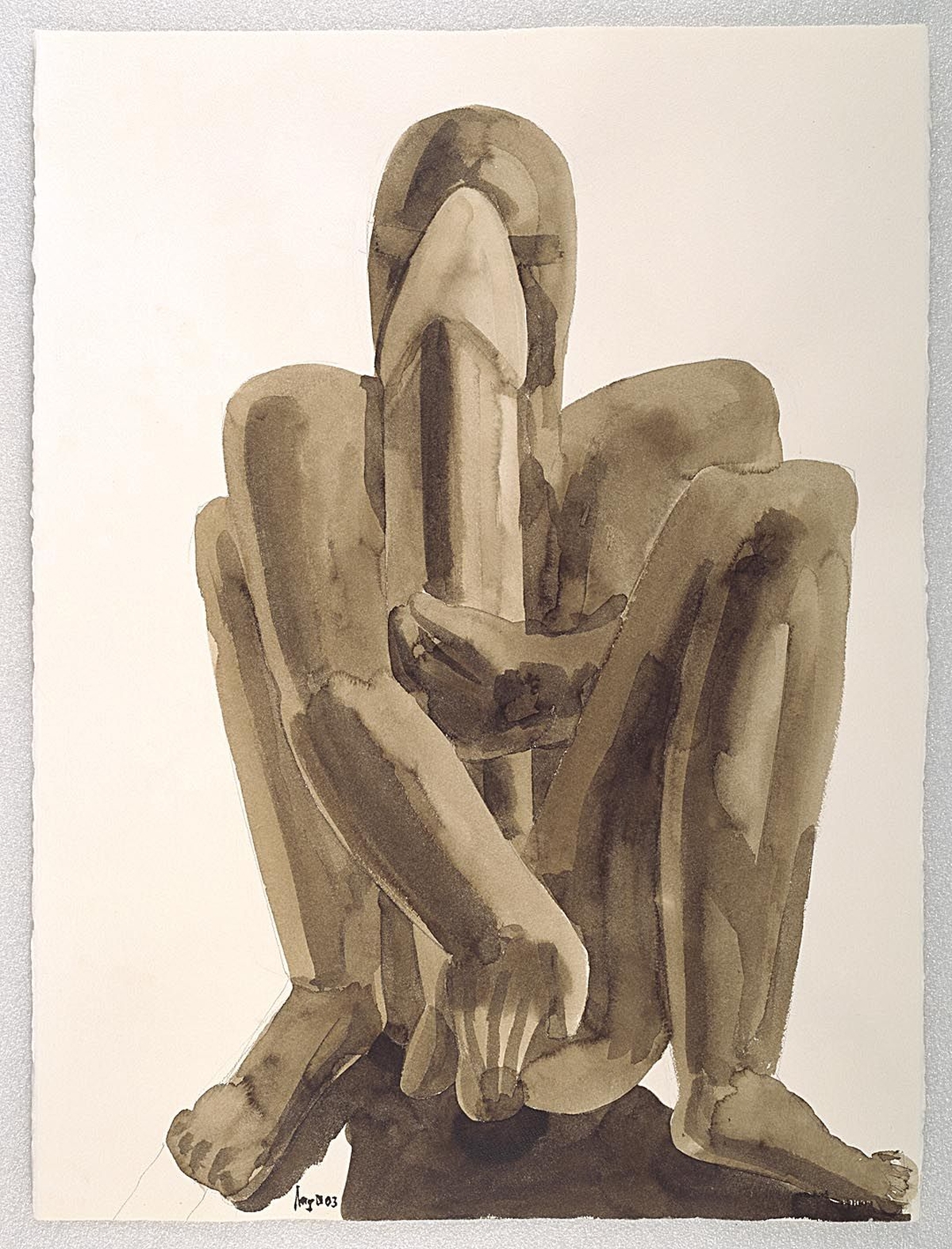 Miquel Navarro / Apoyado II, 2003. Institut Valencià d'Art Modern, Generalitat. Donación del artista. © Miquel Navarro, VEGAP, Valencia, 2020.
Miquel Navarro / Apoyado II, 2003. Institut Valencià d'Art Modern, Generalitat. Donación del artista. © Miquel Navarro, VEGAP, Valencia, 2020.Case study. Miquel Navarro’s secret collection
IVAM, Institut Valencià d'Art Modern ( January 30, 2020 - May 31, 2020 )
Miquel Navarro (Mislata, 1945) was one of the group of artists who transformed sculpture in the late 1970s. His large installations in towns and cities are welcoming places but they also form part of the authority that dominates and controls. A similar effect is produced by his monumental totems, anthropomorphic machines that are also protective deities and menacing gods.However, his drawings are more immediate and are a response to what he himself has defined as “the flow of life”.
This exhibition is a secret collection, like the ones that still remain in archaeological museums, in which the drawings and small clay sculptures made by Miquel Navarro that are preserved in the IVAM can be seen alongside African fetishes and masks, archaeological objects and toys, all of which belong to his personal collection
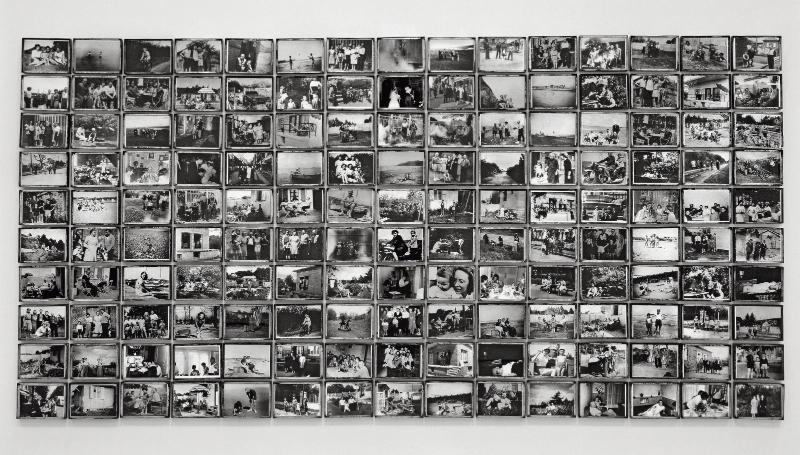 Christian Boltanski, Album de photos de la famille D., 1939-1964 (1971 @)Musée d'art moderne et contemporain de Saint-Étienne Métropole. Photo Yves Bresson
Christian Boltanski, Album de photos de la famille D., 1939-1964 (1971 @)Musée d'art moderne et contemporain de Saint-Étienne Métropole. Photo Yves BressonCHRISTIAN BOLTANSKI - Life in the Making
Musée National d’Art Moderne, Centre Pompidou. Paris ( Novenber 13, 2019 - March 16, 2020 )
Through a pathway of some fifty works by Christian Boltanski, this vast presentation by one of the key figures of contemporary creation reveals the magnitude and ambition of an artist marked by his history and a half-century of questioning on the role and voice of the artist in our societies.
Thirty-five years have passed since Christian Boltanski’s first exhibition at the Centre Pompidou. Designed by Boltanski himself as a vast journey into the heart of his work, this new exhibition is not so much a retrospective as a series of sequences marking the steps and transformations of his approach.
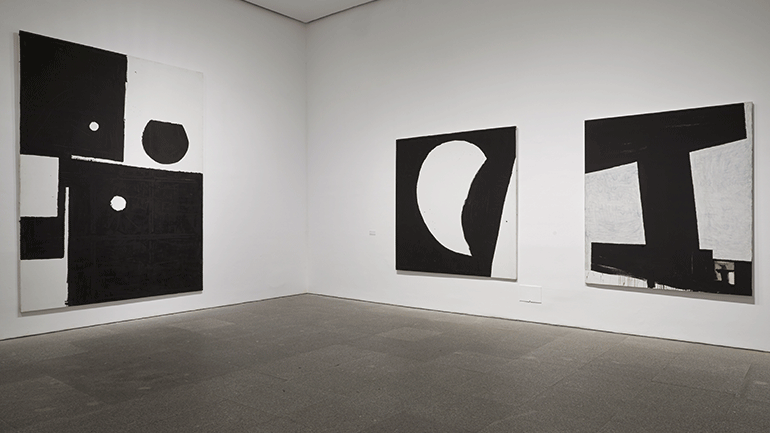 View of the exhibition Miguel Ángel Campano. D’après
View of the exhibition Miguel Ángel Campano. D’aprèsMIGUEL ÁNGEL CAMPANO - D’après
Museo Nacional Centro de Arte Reina Sofía ( November 6, 2019 - April 20, 2020 )
The Museo Reina Sofía stages a retrospective survey of the work of artist Miguel Ángel Campano (Madrid, 1948 – Cercedilla, Madrid, 2018) by way of a selection in excess of one hundred works made from 1972 onwards. The show, the last exhibition project in which the artist directly took part, parades the problems, processes, and resources Campano focused on. Not ever channeling them into the ditch of any single style, Campano’s long cycles of painting succeeded; and so narrating Campano’s oeuvre – and its many forms – always requires enunciating an “and then,” an après. Sticking to Campano’s succeeding interests, the exhibition also renders an account of the constants in a career traversed by emotional impetus and an analytical, learned approach to painting.
Campano’s work was also referential: when observing and painting the art of the past, he often painted d’après Eugène Delacroix or Nicolas Poussin, becoming heir to the languages that the history of art had made available. Yet Campano’s canvases d’après are never merely works “according to” the painter he was studying, but rather “following from,” and hence releasing a flight from the canon. His works from life – d’après nature – depart from their own objective referents, too. All in all, as concerns the d’après which feeds Campano’s work, to predicate an “according to” is only possible for Campano's painting proper. The exhibition thus can be summed up as a digest of painting according to the artist, a museum of paintings d’après Campano.
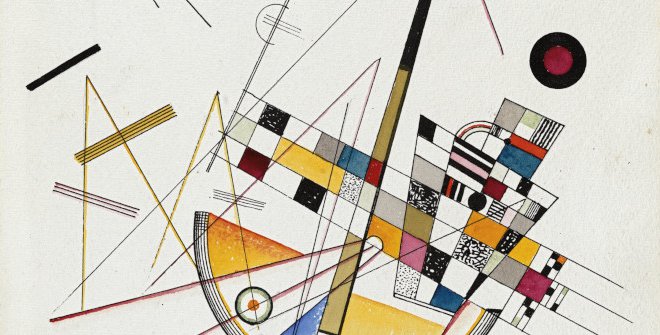 Wassily Kandinsky. Delicate Tension No. 85, 1923. Watercolour and ink on paper. 35.5 x 25 cm © Wassily Kandinksy, VEGAP, Madrid
Wassily Kandinsky. Delicate Tension No. 85, 1923. Watercolour and ink on paper. 35.5 x 25 cm © Wassily Kandinksy, VEGAP, MadridThe Bauhaus in the Thyssen collections
Museo Nacional Thyssen-Bornemisza - Madrid ( October 28, 2019 - January 12, 2020 )
To mark the centenary of the Bauhaus, the Thyssen Bornemisza Museum is organising a small exhibition featuring works by artists historically associated with the school and part of the museum’s permanent collection.
Located on the museum’s first floor balcony, the exhibition pay particular attention to works created in the period when the Bauhaus was active (1919-1933) and, some of which have been on display in exhibitions organised by the school. Therefore, the project, curated by the museum’s curatorial team, includes the publication of a short explanatory catalogue.
The Staatliche Bauhaus, which means State Construction House, was the school of architecture, design, crafts and art founded by Walter Gropius in 1919 in the city of Weimar (Germany). Better known as simply Bauhaus, it was closed by the Nazi Party in 1933, leading to many of its members moving to the United States.
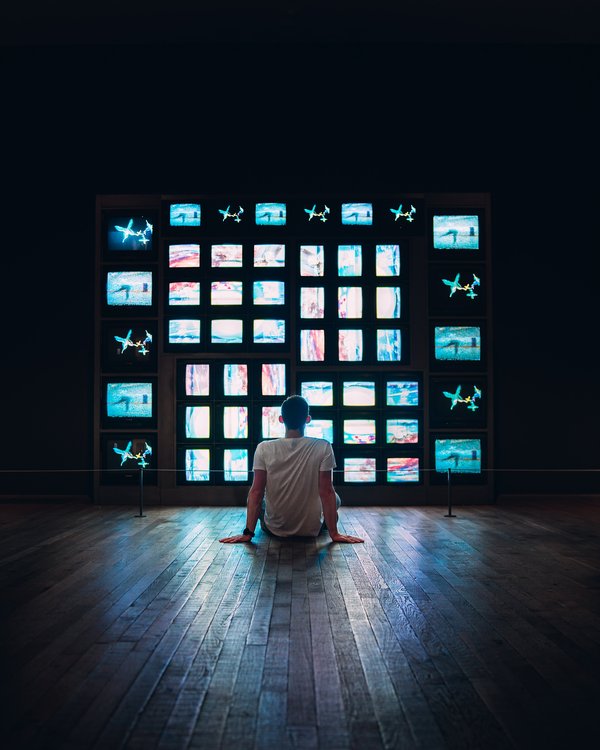 Nam June Paik TV Eyeglasses 1971 Collection & © The Estate of Nam June Paik. Photography © Liam Man
Nam June Paik TV Eyeglasses 1971 Collection & © The Estate of Nam June Paik. Photography © Liam ManNAM JUNE PAIK
Tate Modern - London ( October 17, 2019 – February 9, 2020 )
Nam June Paik’s experimental, innovative, yet playful work has had a profound influence on today’s art and culture. He pioneered the use of TV and video in art and coined the phrase ‘electronic superhighway’ to predict the future of communication in the internet age.
This major exhibition is a mesmerising riot of sights and sounds. It brings together over 200 works from throughout his five-decade career – from robots made from old TV screens, to his innovative video works and all-encompassing room-sized installations such as the dazzling Sistine Chapel 1993.
Born in South Korea in 1932, but living and working in Japan, Germany and the US, Paik developed a collaborative artistic practice that crossed borders and disciplines. The exhibition looks at his close collaboration with cellist Charlotte Moorman. It also highlights partnerships with other avant-garde artists, musicians, choreographers and poets, including John Cage, Merce Cunningham and Joseph Beuys.
Exhibition organised by Tate Modern and San Francisco Museum of Modern Art in collaboration with Stedelijk Museum Amsterdam, the Museum of Contemporary Art, Chicago and National Gallery of Singapore
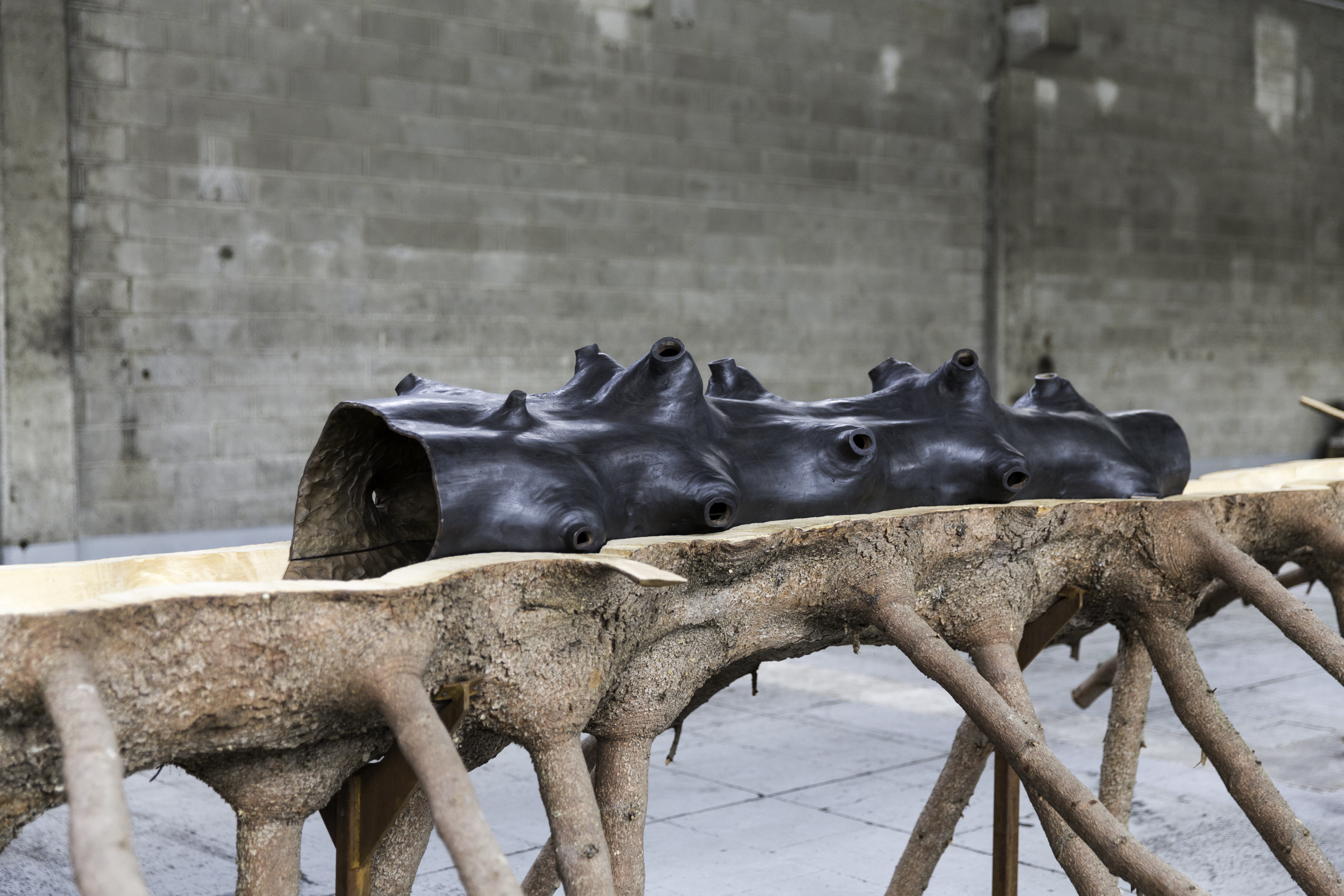 Giuseppe Penone, Matrice, 2015 Spruce wood, bronze 110 x 250 x 3000 cm foto © Archivio Penone
Giuseppe Penone, Matrice, 2015 Spruce wood, bronze 110 x 250 x 3000 cm foto © Archivio PenoneGIUSEPPE PENONE . Incidences of the Void
Castello di Rivoli Museum of Contemporary Art - Torino ( October 12, 2019 – February 2, 2020 )
Giuseppe Penone. Incidences of the void stems from the collaboration between the CRC Foundation and the Castello di Rivoli Museum of Contemporary Art. Conceived as an exhibition project shared between the two institutions in the Monumental Complex of San Francesco in Cuneo and in the garden of the Castello di Rivoli, the exhibition presents the heart of the research of the artist Giuseppe Penone (Garessio, 1947). A reflection on the duality between empty and full as constitutive and material parts of his artistic work, through a precise selection of works that connect the two locations, in a sophisticated game of juxtapositions and references. Today, among the most important and recognized sculptors in the world, the artist emerged in the late sixties in the context of Arte Povera.
Among the most important and innovative artistic movements of the 20th century on an international level, Arte Povera has its origin in Piedmont, from which an important core of the group of artists comes. Arte Povera is generally defined as an art of heterogeneous and "poor" materials and techniques. More important than this aspect, artists are interested in creating real situations of energy, in which nature and culture are not opposites. Today Arte Povera, and in particular the work of Penone, enjoys a renewed interest, also linked to the appreciation of that artistic freedom and the interest in nature present in it.
Penone's art explores the foundations of sculpture as a way of knowing and empirically understanding the world. His art is based on the principle of embodying a physical, tactile-visual awareness of all organisms and their transformations. Penone perceives the world and life in a sculptural way, touching and caressing its constituent parts. Even the act of breathing is a form of automatic sculpture, produced without realizing it. The sculpture concerns the carving, the excavation and the production of voids or, on the contrary, it concerns the fusion, duplication and multiplication, through a series of steps, from positive to negative, of the form being duplicated or copied. Both addition and subtraction occur through meeting gestures and, therefore, through intentional relationships between the human and matter, between the human and the non-human.
